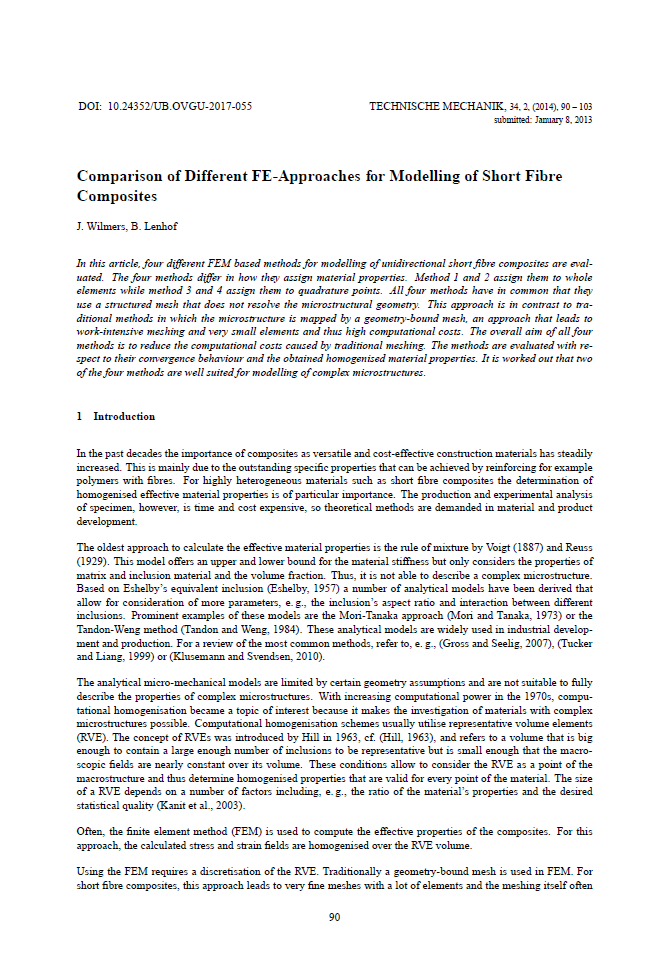Comparison of Different FE-Approaches for Modelling of Short Fibre Composites
DOI:
https://doi.org/10.24352/UB.OVGU-2017-055Abstract
In this article, four different FEM based methods for modelling of unidirectional short fibre composites are evaluated. The four methods differ in how they assign material properties. Method 1 and 2 assign them to whole elements while method 3 and 4 assign them to quadrature points. All four methods have in common that they use a structured mesh that does not resolve the microstructural geometry. This approach is in contrast to traditional methods in which the microstructure is mapped by a geometry-bound mesh, an approach that leads to work-intensive meshing and very small elements and thus high computational costs. The overall aim of all four methods is to reduce the computational costs caused by traditional meshing. The methods are evaluated with respect to their convergence behaviour and the obtained homogenised material properties. It is worked out that two of the four methods are well suited for modelling of complex microstructures.





